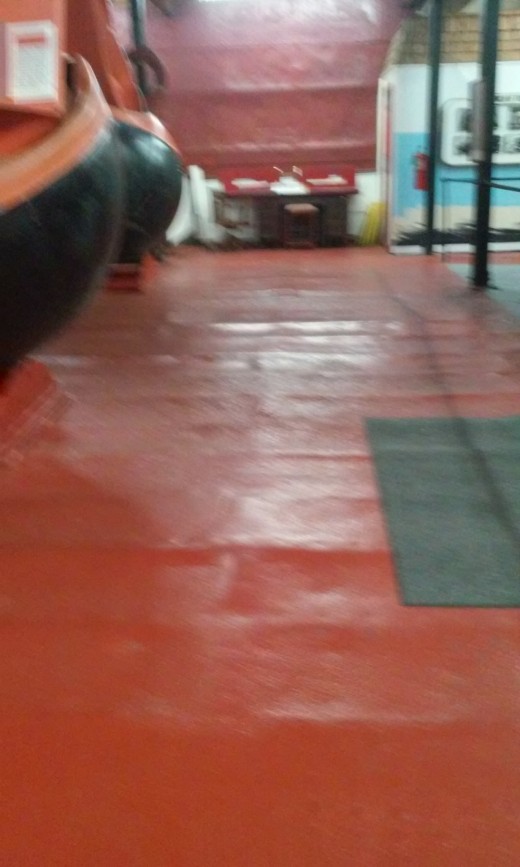- HubPages»
- Travel and Places»
- Visiting North America»
- United States
Traveling Around - Sault Sainte Marie, MI - A Great Lakes Barge turned into the Valley Camp Ship Museum

Origin and Location
The Valley Camp Ship is located on the water of the St. Mary's River in the downtown area of Sault Sainte Marie, MI. Canada is visible across the river. There are a series of attractions in the area of which the most prominent and a good reference point is The Tower Of History - a 210 foot tower across the street from the Valley Camp dock.
The museum is housed in the Valley Camp Freighter. It was built in 1917 and christened as the Louis W. Hill. It sailed with iron ore and coal for almost 40 years and in 1955, the name was changed to the Valley Camp. It began carrying a more varied group of cargo including grain and stones. It carried these cargoes to Buffalo, New York, Cleveland, Ohio, and Indiana Harbor, Indiana, until 1966 when a problem with a coal burning boiler forced the company to discontinue its use. It was purchased by Le Sault de Sainte Marie Historical Sites, Inc., in 1968 and was towed to its current location.
It is listed on the National Register of Historic Places as a museum ship. The deck space on the top level is 525 feet long and 58 feet across. Valley Camp is well maintained and although large is easily navigated with ramps rather than stairways leading from one level to another.
The Power Plant

This is the engine that powered this massive boat. It is located near the center of the vessel and is surrounded by large bunkers. The bunker towards the entry of the museum used to hold 300 ton of coal to be used in firing the steam engine. When underway, the engine burned 50 tons of coal a day. This enabled the loaded barge to reach 10 miles per hour.
Layout Of The Museum
When we entered the museum there were some exhibits immediately adjacent to the entrance. The route to tour was well marked and when we followed it through a doorway we were in a large area that was perhaps one third the length of the boat. There is a walkway around the outer side of this walkway with the center area open to below and above. The outer walls have display windows (seven on each side) that hold a variety of exhibits. These exhibits range from aquariums with live fish to displays about other vessels that sailed on the Great Lakes.
The two display areas (one in the front and one in rear of the freighter) were formed by removing the walls of the bunkers in which the cargo was stored during transit. Therefore, these display area are approximately 150 feet long, 50 feet across, and 30 feet deep. The top deck remains as it was during the time it was in use as a freighter and is open to the weather.
There are well marked ramps leading up and down from one deck to the next.
Lower Level Exhibits

One of the larger exhibits in the museum is a 1937 36 foot Coast Guard. It was a self righting boat that was very difficult to capsize. It was in use until 1966 when it was replaced by a more powerful 44 foot craft.
In this photo the window exhibits on the entry floor are visible next to the walkway from the entrance.
On this lower level there is a display room devoted to the loss of the Edmund Fitzgerald which was lost in a storm on Lake Superior in 1975. All 29 of the crew members went down with the ship. A lifeboat washed up in Canada a few days later with one life jacket in it but no one from the ship.

In several places throughout the museum there are exhibits of Fresnel Lens from atop lighthouses on the Great Lakes. These large lights contain four flash panels making four revolutions a minute causing a flash every fifteen seconds. Either lenses of this type or air way beacons were in use on most of the lighthouses on the Great Lakes.
The Top Deck

This view of the top deck is from about midway and towards the pilot house which is on the opposite end of the vessel from the museum entry. The hatches that are visible on the deck are where the loading and unloaded of the cargo would take place. Each of the hatched areas would hold just under 1,000 tons of coal, making a total cargo of about 12,000 tons.
The floor of the museum is at the bottom of these hatches and the flooring shows the results of 50 years of ore being loaded and unloaded. It is buckled and uneven and we were warned upon entry to watch our step because it was so uneven.
Floor Of The Hatches

Summary
There is a Gift Shop associated with the museum that is a short walk across the parking lot. Restrooms and offices are in the Gift Shop.
We spent about 1 1/2 hours at the museum and found many, many interesting exhibits to look at and read about. It might be difficult for patrons not interested (such as small children or toddlers that had to be pushed in strollers or carried). It would be very viewable to someone with a cane but a walker would be more difficult and a wheelchair would have many ramps to go up or down. We'd recommend a phone call if accessibility might be a problem.
There are shortened seasonal hours and the museum is closed during the winter (mid-October to mid-May). There is an admission charge. The museum hours and charges are listed on their website.
This is one of several sites in the immediate area that we would recommend as one to be seen.








